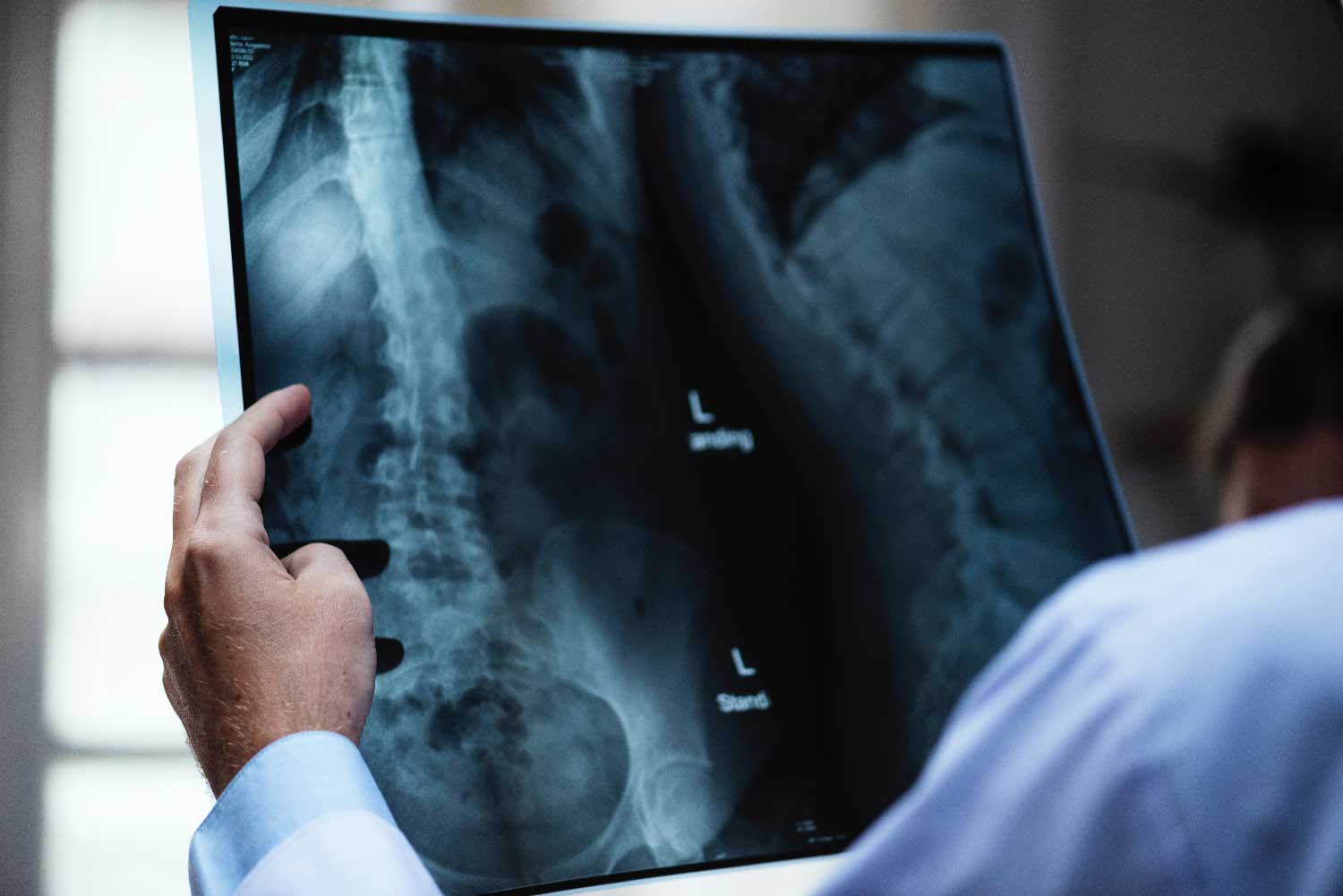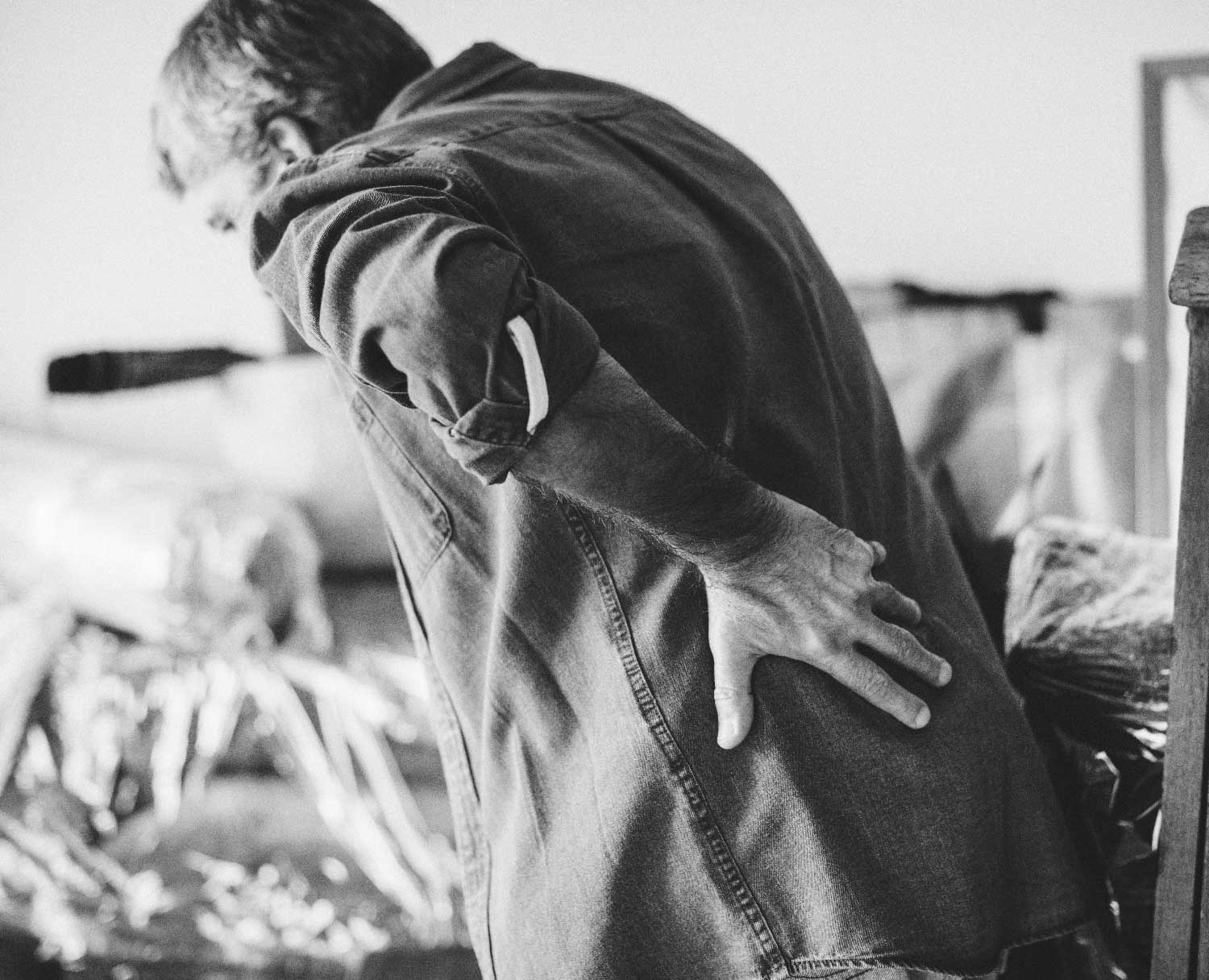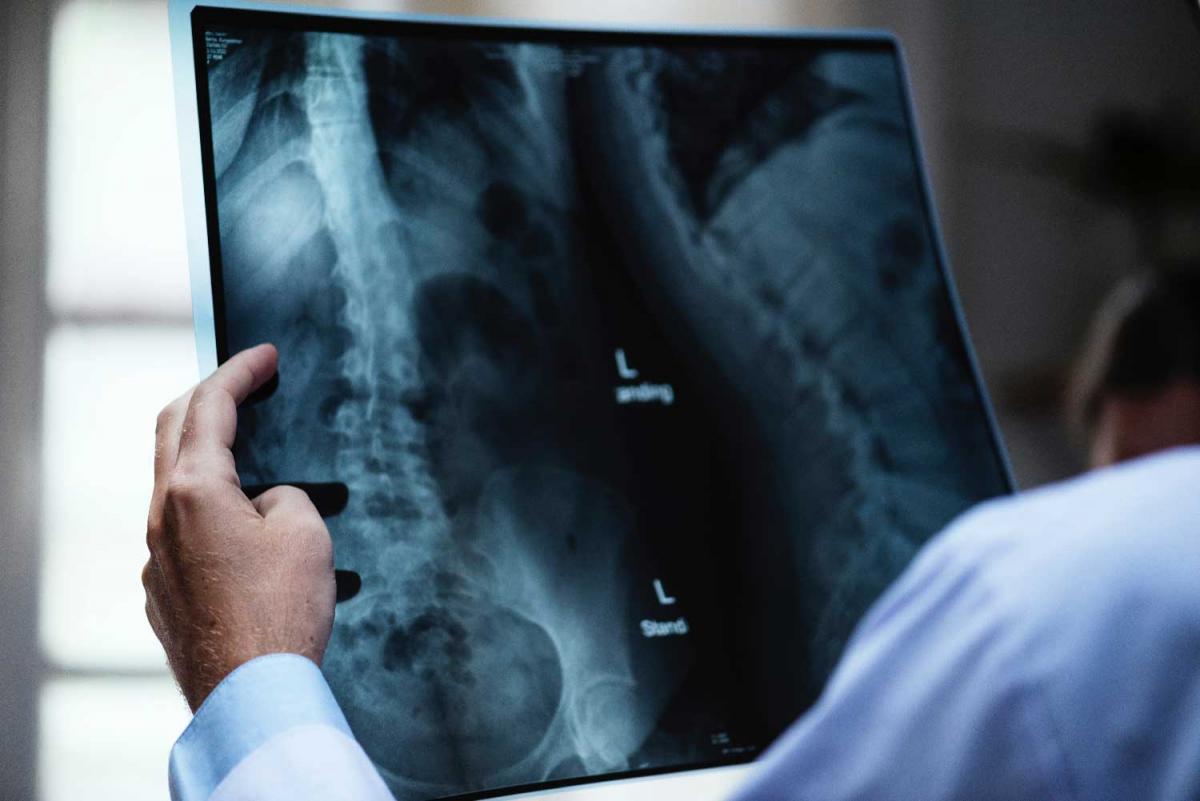Most people will suffer from back pain from time to time, but it's rarely anything serious. Most types of back pain that the majority of people experience can go away either on its own, or with painkillers, physiotherapy and gentle exercise, but there are times that none of these things can help.
For spinal cord injuries awareness day, we’re going to talk about the spinal cord, what it does, and how to tell when your back pain is more serious than a sprain or pulled muscle.

A quick look at the spine:
The spine is made up of 33 vertebrae, which are interlocking bones that run from the top of our necks right into the pelvis, ending with the coccyx (or what’s commonly known as the tailbone). The vertebrae are connected by ligaments (also known as vertebral discs) and muscles. The discs act as shock absorbers, whilst the muscles help to maintain core strength and support your spine during day-to-day activities.
The vertebrae of the spine are also divided into 5 parts:
- Cervical vertebrae. (C1 – C7). These sit around the neck area.
- Thoracic vertebrae. (T1 – T12) These take over from the cervical vertebrae and run from the upper back to the mid-back.
- Lumbar vertebrae. (L1 – L5) These sit in your lower back, usually around where the curve in your spine is.
- Sacral vertebrae. (S1 – S5). These make up the lowest part of your spine and sit in the pelvic area. After the
- Coccygeal/coccyx/tailbone. This is the final bone in your spine and sits around the intergluteal cleft (or, butt crack, as it’s most commonly known).
If you have a spinal cord injury or even a slipped disc, you might hear medical professionals talking about a certain region of the spine. This usually correlates to where the injury is. For example, if a doctor tells you that you’ve got a “herniated lumbar disc at L4/L5”, this means that the disc between the lumbar vertebrae 4 & 5 has come out of place slightly. But even a slipped disc doesn’t usually cause a spinal cord injury, despite how painful it can be.
So what is the spinal cord?
The spinal cord runs from the brain stem right down to the lumbar region of your spine (around L3). It’s made up of long bundles of nerves and nerve fibres, and at the point where it ends, the nerves resemble a horse’s tail and are called the Cauda Equina.
The spinal cord lives within the vertebrae of the spine, protected within a canal that runs through the bones, and is cushioned by cerebrospinal fluid. In other words, the spinal cord is very well-protected, and there’s a good reason for this.
It’s responsible for relaying information between the brain and the rest of the body, as it’s one of the main parts of the central nervous system. The spinal cord is even partly responsible for homeostasis (keeping our body balanced and at a level where it should be at). As it transmits signals to and from the brain and the body, it plays an extremely important part of how we function. Some of the roles it plays include:
- Regulating heart rate
- Assessing temperature
- Maintaining homeostasis
- Regulating breathing
- Motor function
- Sensation
If anything is wrong in the body, the spinal cord sends a signal to the brain. So what happens when something is wrong with the spinal cord itself?

Spinal Cord Injuries
When the spinal cord is injured, it can spell disaster for the patient. Depending on the severity of the injury, many might lose the ability to control their movements and may experience a total loss of sensation below the site of the injury, but this is often the worst-case scenario. When the spinal cord experiences some sort of trauma or damage, it loses the ability to relay messages as effectively. Essentially, this means that parts of your body might feel different compared to before you had the injury.
Generally speaking, the higher up the spine that the injury happens, the greater the damage, but this depends on the severity of the trauma.
Spinal cord injuries (regardless of the part of the cord that’s damaged), can often leave patients needing painkillers and mobility or living aids due to a loss of sensation or motor ability. These can include anything from crutches to wheelchairs depending on the symptoms that the person experiences post-injury. Often, the symptoms experienced in the aftermath of a spinal cord injury can be chronic and even life-long. This can also depend on whether the SCI was complete or incomplete.
- Complete SCI: When a patient loses all sensation and motor function below the site of the injury. The spinal cord may have been fully compressed and the damage is usually permanent. Those with complete spinal cord injuries often have some degree of paralysis below the injury and may lose all control of their bladder and bowels.
- Incomplete SCI: This describes injuries where the spinal cord was still compressed, but the extent of the damage is less severe. Patients might experience altered sensation, but not a complete loss of it. They may experience some disturbance with balance and might be weaker than they were before the injury. This damage can either be permanent or may improve slightly over time.
Spinal cord injuries aren’t always obvious immediately, and if the injury is gradual, It might be difficult to notice new symptoms. So how do you know if your back pain is serious?
Symptoms of a spinal cord injury
Certain symptoms are known as “red flags”, and a combination of these might indicate that you have a serious spinal cord injury. These include:
- Loss of movement
- Decreased movement
- Loss of bowel or bladder control
- Loss of sensation
- Decreased sensation
- Altered sensation
- Exaggerated reflex activity or spasms
- Changes in sexual function
- Reduced sexual sensitivity
- Fertility issues
- Intense pain caused by nerve damage
- Difficulty breathing (may indicate an SCI in the upper spine)
- Weakness
- Partial or complete paralysis below the injury site
- Difficulty balancing
- Difficulty walking
- Extreme back pain
- Pressure in neck, head or back
- Tingling or numbness in the limbs
If you experience a combination of any of the above symptoms, you should seek emergency treatment and go to your nearest A&E department. When you arrive, you'll likely be physically examined and sent for an MRI or CT scan if the doctor suspects that you might have suffered a spinal cord injury. The scan should help to confirm the extent and location of the injury.
You might be asked questions about what you can and can’t feel, as well as being given an anal tone exam to check whether you can control the muscles in your anus.
Most spinal cord injuries require urgent treatment due to how important it is for the body to function. You may be immobilised whilst the doctors and specialists are in the process of diagnosing you, but this is to avoid any further damage to the spinal cord.
Sometimes, a spinal cord injury might need surgery to remove whatever’s compressing the cord. In these cases, you’ll likely be assessed for whether your condition is stable, progressing, or critical. In most cases, surgical intervention will be classed as urgent or even an emergency.

Can I prevent a spinal cord injury?
To some extent, you can look after your spine, such as practising core-strengthening exercises and making sure that you know how to lift heavy objects. This can prevent accidents that include the discs in the spine, but there are other causes of spinal cord injuries that aren’t avoidable. These can include:
- Road traffic accidents
- Direct force (being stabbed or shot)
- Tumours that compress the spinal cord
- Some types of arthritis
- Some other spine conditions may put you at higher risk of experiencing a spinal cord injury
The best thing you can do is to be aware of the symptoms of a serious back injury. Whilst it’s not necessary to get straight to hospital at the first sign of any pain, you should take note of the symptoms listed above and get checked out if you’re at all concerned.










